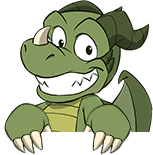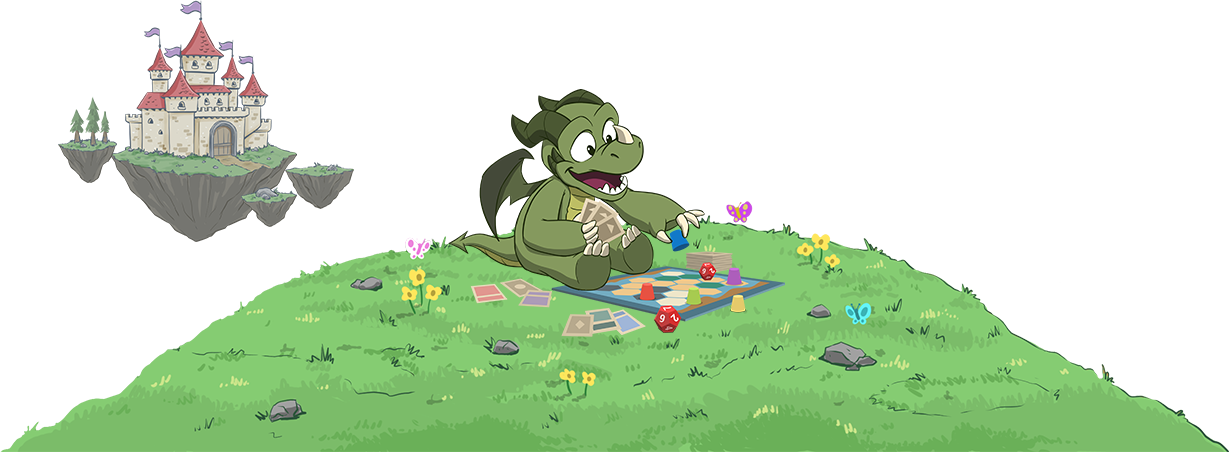Description
DOOM: The Board Game is a strategy board game of tactical combat for two tofive players, based on Bethesda and id Software’s video game of the samename. Featuring two distinct player roles, the game brings the epic battlebetween elite marines and Hell’s most threatening monsters to thetabletop.
DOOM immerses players in a fierce battle between legions of demons,controlled by one invader player, and a cooperative team of up to four marines.The game guides players through two cohesive operations, during which themarines strive to achieve objectives like restoring power to the Union AerospaceCorporation’s facilities or manning expeditions right down into the pits ofHell. Meanwhile, the invader commands their demons to slaughter the soldierstime and time again in an attempt to protect their fiery domain and destroy allof humanity.
Special Operations
Each of the operations is made up of six missions, spanning a variety of UACstations and the scalding territories of Hell. Each mission takes place on aunique map and provides a set of special objectives for both the invader andmarines. The designated objective card indicates a goal for the marines toaccomplish, while also providing an exact number of times the demons must killthe marines in order for the invader to crush the operation. In addition tothese objectives, the cards also include special rules pertaining to eachspecific mission, shaping strategy with unique abilities for both sides of thestruggle.
Alongside the objective card, the setup of each mission is decided by a setof threat, invasion, and event cards. The threat cards describe three differentways in which the invader may summon their demons from the portals across themap: Assault, Horde, and Infestation. The threat card is visible to all players,however, the demons at the invader’s disposal remain concealed from themarines on the hidden invasion card. The invasion card lays out six invasiongroups which the invader may summon when the portals are activated, increasingtheir threat level on the board. The final step in the invader’s setup ofeach mission is sorting out the event cards, which make up the invader’s deckof special abilities and defence. Each mission’s carefully selectedcombination of these three elements makes every play a seamless and unique gameexperience.
Fall In
After setup, the game proceeds in two alternating phases—status andactivation. During the status phase, the invader prepares their newest demons,draws their hand of event cards, and gains Argent Power to spend on specialabilities. The status phase also involves filling and shuffling the initiativedeck, which has a card for each marine and as many invader initiative cards asthe invader has demons. This designates the turn order of the activation phase,so each round is random. However, there are some cards that allow the invader ora marine to modify the order of some initiative cards.
The activation phase begins with drawing the top card of the initiative deck.If a marine card is revealed, that marine proceeds with their action, carryingout one main action and then any number of bonus actions. At the end of marineactivation, they draw cards from their action deck up to their hand size. Ifdrawing from the initiative deck reveals an invader card, the invader may chooseany demon type on the board to activate, gaining movement points equal to thedemon’s speed and performing one attack. Play proceeds, alternating betweendrawing from the initiative deck and activating based on the card shown untilthe deck is empty, at which point the round begins again.
Locked and Loaded
The team of marines is made up of one to four units, each with their ownindividual class, loadout, and action deck. As a marine, you will choose yourclass card at the beginning of each mission and keep it throughout the game. Thecard will indicate what unique abilities your marine possesses, helping to shapeyour strategy and the dynamic of your team as a whole. Class abilities rangefrom allowing you to reorder initiative before each activation phase begins toincreasing the number of cards you can hold in your hand.
You will also begin the game with a standard-issue loadout consisting of twoweapons. The action cards for these weapons are combined with four core actioncards to create a ten-card action deck. You will cycle through this deck as thegame progresses, using it to fill your hand and defend against attacks. Eachcard has either a main action, bonus action, or reaction on it, which you canplay out of your hand. In the upper right-hand corner, each card also indicatesa level of defence, from no defence to dodging the attack entirely. Wheneveryour marine becomes the target of an attack, you will flip the top card of youraction deck, gaining defence accordingly.
Your action deck is not limited to the ten cards you begin with. There areclasses you can choose and pickups you can collect in order to expand your deckfurther. A variety of grenades and heavy weaponry will help you upgrade yourdeck, adding new attacks, abilities, and defense. Expanding your deck is asurefire way to make your marine a force to be reckoned with, whether they wielda tricky grenade or a savage chainsaw.
Vicious Assault
One player in your game of DOOM will take on the role of the invader, commandinglegions of demons across valuable UAC facilities and Hell’s searinglandscapes. As the invader, you must summon your host of demons across themission map, complicating the marines’ objectives and repeatedly wiping themout. The threat and invasion cards given at the beginning of each mission willdesignate which demons you're able to summon, as well as when and where they canspawn. Your masses of monsters will without a doubt outnumber the marinesyou’re tasked with dispatching, but the marines can respawn following death,so you’ll want to consider your summoning strategy carefully.
The demons at your disposal are listed on your invasion card, each associatedwith a coloured portal. While the blue portal summons less intimidatingmonsters, with lower health and less powerful attacks, the yellow and redportals will allow you to call upon increasingly more dangerous demons. Theinvasion card is hidden from the marines, allowing you, the invader, to throwsurprise invasion groups their way, further disturbing their progress toward thegiven objective.
Each of the demons you summon will have specific abilities, speed, range, andhealth listed on their demon card. While many of these abilities can be used atany time, others will require Argent Power to trigger, which can be collected bydiscarding useful event cards or by summoning an invasion group that includes acertain amount of Argent Power tokens. These tokens are then discarded when usedto activate a special ability. When spent at the perfect moment, these tokenscan allot you exceptional feats, allowing you to influence the course of marineactions as well as your own.
The event cards are drawn during the status phase of the round, during whichyou may choose to discard up to three in order to gain Argent Power. However,these cards can be very valuable on their own. Not only do they serve as yourdemons’ own defence, much like the marines’ action deck, but they also havespecial effects, such as augmenting attacks, improving your defence, or gainingArgent Power tokens.
Rage and Revenge
The invader player has an immense amount of power, with massive hordes of demonsat their disposal, but the marines still have a couple tricks up their sleeves.Because death is not feared, but embraced in the game, the marines areencouraged to run into each battle with reckless abandon. Death is inevitable,so as a marine, there’s only one thing to do—make sure you take someonedown with you.
Glory Kills and Telefragging are exceptionally unique attacks that themarines have available, should their demonic enemies lose a significant amountof health or move to the wrong place at the wrong time. Glory Kills may beexecuted when a demon has been damaged to their stagger value, a number on theircard located just below their health. To carry out the kill, a marine mustcharge into that demon’s space for two movement points, receiving in returntwo health points as well as a Glory Kill card, which provides still morespecial abilities. Telefragging, on the other hand, is an action that may becarried out at any time. As long as a demon is standing directly upon ateleporter, a marine may spawn there, whether by respawn or teleporting fromanother active teleporter, immediately fragging the demon and removing them fromthe map and the game.
Hell Has Broken Loose
Bring the thrilling experience of Bethesda and id Software’s first-personshooter, DOOM, to the tabletop with DOOM: The Board Game. Gear up to take downthe hordes of horrific demons as one of the UAC’s heavily-trained marines, orflood the claustrophobic corridors and desolate dunes with a mass of demons asthe invader. Gather your friends for an exceptional marine-on-demon combatexperience in DOOM: The Board Game.
The Dice Tower Seal of Approval is a trademark of The Dice Tower, LLCand is used with permission.

Product Details
Product Code: 1592879Barcode: 841333101978
Publisher: Asmodee
Brand: Doom
Playtime: 120-180 minutes
Recommended Age: 14+
Number of Players: 2-5
Board Game Mechanics: Deck Building | Dice Rolling | Grid Movement | Hand Management | Modular Board
Categories: All Games, Best Sellers, Board Games, Card Games, Dice Games, New Board Games & Puzzles, Sale Games, Strategy Board Games, Word Board Games
Delivery
Delivery Rates
Australia Delivery
Our delivery rates vary based on the weight and volume of your total order. An accurate shipping cost will be calculated during the checkout process. Orders are shipped by air via Australia Post straight to your door!
Delivery Times
The Board Gamer orders ship from our fulfillment partner Mighty Ape. Their warehouse is based in New Zealand with daily flights across the Tasman with Australia Post.
As a result of courier delays the current standard delivery times for In Stock products using Australia Post are as follows:
| QLD | 4-7 business days |
| NSW | 4-8 business days |
| ACT | 4-8 business days |
| VIC | 6-9 business days |
| SA | 7-10 business days |
|
TAS, WA |
8-10 business days |
| NT | 10-13 business days |









